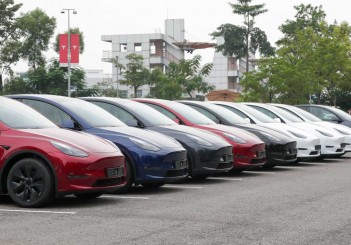 |
| Shiny cars after the final detailing treatment. |
In October, we delved into the world of coating systems and took an insider’s peek into what makes coatings tick and how to differentiate between marketing hype and the actual truth.
We certainly hope that with the education, new car owners and existing ones are able to select what works for them and preserve the aesthetic value of their vehicles.
In this article, we focus on perhaps the most underrated, yet crucial aspect of detailing, that is: the surface preparation process. In detailing-speak, it is perhaps what defines a showcar.
To explain a little on this, surface preparation involves the methodical correction and finessing required to an otherwise imperfect paintwork finish.
 |
| There's such a thing as steaming a car. |
It is one of many things, a multi-stage polishing combination, clay work, decontamination and many others.
Imperfections could be swirls, holograms, scratches, clear-coat shrinkage, etc.
In short, it’s what it takes to produce a stunning mirror-finish on a regular paintwork surface.
Why surface preparation?
No coating in the world can make a car look perfect without proper surface preparation.
There are no shortcuts or magic dust that can work a miracle without putting in the time.
An imperfect surface usually means that any last step product (traditionally a carnauba wax or synthetic sealant) will not produce optimum results.
While coatings can add a certain amount of gloss to a surface, the true test of a detailer’s skill is how a car’s paintwork looks just before any last-step product (in this case, a coating system of choice) preserves the final work.
Each detailer has his own methods to achieve a showcar finish but in our detailing processes, the team at AutoDetailer Studio practices the decontamination and sterilisation of the paintwork surface prior to any coating implementation.
This ensures that the corrected paintwork surface that has just been polished is removed of any compound residue, fissure fillers and is presented in it’s final form for inspection.
It is a crucial part of the process where the vehicle is washed down with a pressurized water system, steam-cleaned and moved into our inspection room to determine that the paintwork is impeccable before the coating implementation.
Any remaining imperfection would be spotted within this process and corrected immediately.
The primary reason for this tedious process of decontamination is to remove any oils on the surface of the paintwork from the polishing compounds which would affect how the coating particles bond.
This would also clear the surface from dust particles and residue introduced during the paintwork correction process.
It is imperative that the protective coating adheres directly to the vehicle’s clear-coat ensuring a secure bonding process.
It is after-all expected to last for a fairly long period of time, from three months and up to a year, for the more advanced coatings.
The freshly applied coating system would then usually require a period of time for outgassing and curing before it is ready for pick up depending on manufacturer and technical requirements.
Observe What Is Being Offered
Smart consumers will tend to scout around for the most suitable detailing service provider that suits their needs.
That is perhaps a very wise decision given the nature of marketing hype given to coatings in recent days.
In all honesty, there are many service providers who blatantly sell the concept of coating systems with infinite possibilities, often promising years of maintenance-free worries and the ability to bend the laws of physics (in some cases).
When one visits a service provider to find out more about what is being offered, check specifically what kind of surface preparation is included.
You’ll be surprised to discover that a proper surface preparation is not actually the practiced norm, although it would logically be expected as such.
A simple one-step or two-step (commonly referred to as layers) polishing process would not typically suffice for a quality surface preparation.
Even more so when a vehicle is more than a year-old. In many cases, the polishing compounds would contain glaze or fillers that masks the imperfections giving it the temporary appearance of a good finish.
An isopropyl alcohol wipe-down inspection would quickly show what the surface actually looks without the glaze and fillers in place.
The actual coating system would also not have a proper surface for adherence due to the presence of oils and contamination.
As you might have surmised by now, a coating system is merely a protective sacrificial barrier for the paintwork finish.
The more crucial aspect of a quality showcar finish still lies in the surface preparation carried out to achieve that.
It’s hard work and requires the utmost dedication to the craft of detailing.
In the next feature, we’ll talk about the kind of maintenance required for coating systems in general.
> For more information, check out AutoDetailer Studio on Facebook or browse its website.








